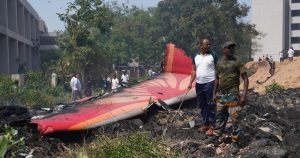The Rise of "The Shadow": Mohammed Sinwar and the Rebuilding of Hamas
The death of Hamas leader Yahya Sinwar in an Israeli drone strike last October marked a turning point in the Israeli-Palestinian conflict. While initially perceived as a crippling blow to the militant group, the subsequent ascension of Yahya’s younger brother, Mohammed Sinwar, also known as "The Shadow," has presented a new set of challenges for Israel. Mohammed Sinwar, a figure shrouded in mystery and less understood by Israeli intelligence, has taken the reins of Hamas and embarked on an ambitious campaign to rebuild and rejuvenate the organization’s fighting force. He has eschewed the traditional collective leadership model, consolidating power and operating with a degree of autonomy unfamiliar to Hamas’s structure.
Retired Israeli Brigadier General Amir Avivi has voiced concerns about the rapid pace of Hamas’s resurgence under Mohammed’s leadership. Avivi contends that Hamas’s rebuilding efforts are outpacing the Israel Defense Forces’ (IDF) capacity to dismantle them, creating a precarious security situation. This accelerated reconstruction involves a significant recruitment drive, targeting young Palestinians to form the next generation of Hamas fighters. This recruitment strategy not only replenishes Hamas’s ranks but also further entrenches the organization within Palestinian society, perpetuating the cycle of conflict.
Mohammed Sinwar’s background and operational style differ significantly from his brother’s. Unlike Yahya, Mohammed has avoided Israeli imprisonment, rendering him a less predictable adversary. His operational experience has largely been conducted behind the scenes, earning him the moniker "The Shadow." This relative anonymity within the Israeli security apparatus adds another layer of complexity to the challenge he poses. He is believed to have been instrumental in the 2006 kidnapping of Israeli soldier Gilad Shalit, a strategic operation that ultimately secured Yahya’s release from prison in a prisoner exchange. This event underscores Mohammed’s strategic acumen and his willingness to employ audacious tactics.
The current ceasefire negotiations between Israel and Hamas carry immense weight, and Mohammed Sinwar, along with Izz al-Din Haddad, holds significant influence over these proceedings. Their decision-making power underscores their importance within the Hamas hierarchy and highlights the shift in leadership dynamics since Yahya’s death. The ongoing negotiations are reportedly at a critical juncture, with a potential deal involving the release of hostages held by Hamas in exchange for Palestinian prisoners. The details of this proposed exchange are intricate, involving phased releases and prioritizing the most vulnerable hostages.
The legacy of Yahya Sinwar, the slain Hamas leader, adds another layer of complexity to the current situation. His turbulent life, marked by imprisonment, radicalization, and ultimately, death by Israeli forces, underscores the deeply entrenched animosity that fuels the conflict. Yahya’s transformation from a convicted murderer and kidnapper to the head of Hamas highlights the complexities of the organization and the individuals who drive it. The cancer treatment he received while in Israeli prison, a testament to the paradoxical nature of the conflict, adds a further layer of irony to his story. His eventual release in a prisoner exchange, a decision that has been met with criticism and controversy, further underscores the high stakes and difficult choices involved.
The potential ceasefire agreement, if successfully implemented, could bring a much-needed respite from the ongoing violence. However, the rise of Mohammed Sinwar and his determined efforts to rebuild Hamas present a significant challenge to long-term stability. His relative anonymity and strategic prowess make him a formidable adversary, and his influence over the ceasefire negotiations adds to the complexity of the situation. The potential release of hostages is a highly sensitive issue, with significant implications for both sides. The details of the prisoner exchange, the phased releases, and the prioritization of vulnerable hostages all underscore the delicate balancing act required to achieve a lasting resolution. Moving forward, understanding Mohammed Sinwar’s motivations, strategies, and leadership style will be crucial for navigating the ongoing challenges and working towards a more sustainable peace.




